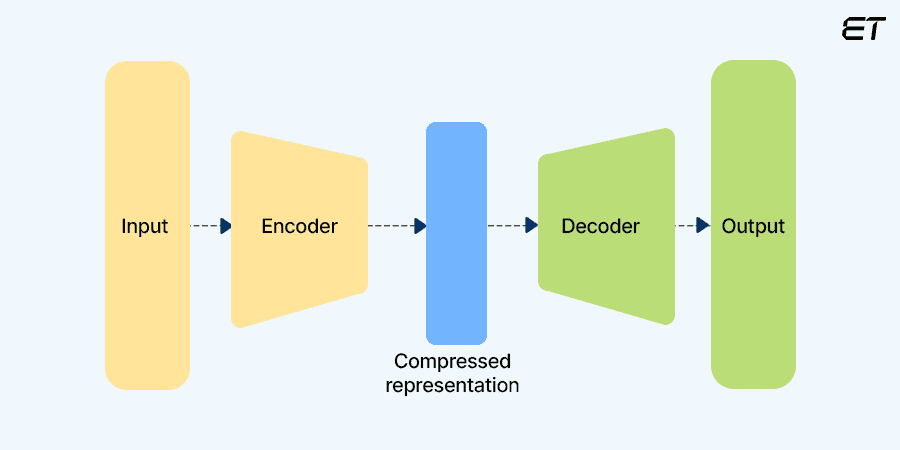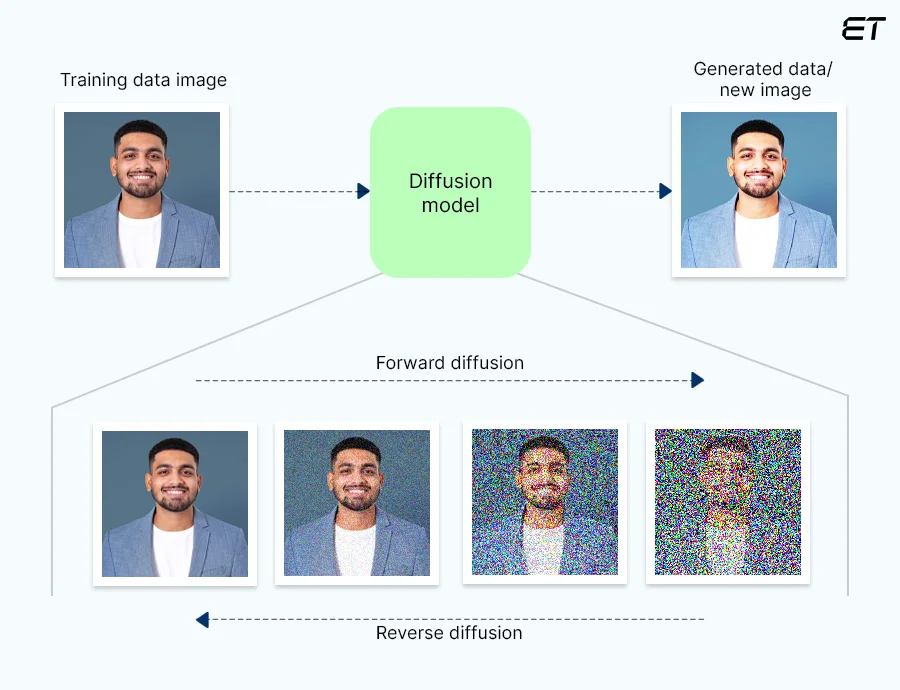
Generative AI Models: Everything You Need To Know
Struggling to innovate and stay competitive in today’s saturated market? Is your team bogged down with repetitive tasks, leaving little room for creativity?
What if you could create high-quality content, ideate and design new products, and streamline workflows—all within a limited budget?
If this strikes a chord, it’s time you consider generative AI models.
Generative AI is not just a trend but rather an innovative force that has helped businesses scale to unprecedented heights. Given its indispensability in today’s digital age, we’ve outlined five ways for you to leverage AI to revolutionize your brand.
So, read on!
What are Generative AI Models?
They are artificial intelligence platforms that can produce a range of outputs based on the prompts you input. They use large training datasets, neural networks, and deep learning architectures to produce original data that replicates the features of the training set in a matter of seconds.
With generative AI models, you can translate text into image outputs, and generate visuals, audio, speech, and other forms of synthetic data.

Looking to leverage AI to make accurate business predictions? Check out our blog on Generative AI vs Predictive AI
How Do They Work?

Generative AI models are trained to identify both broad and small-scale patterns and relationships in training datasets using unsupervised or semi-supervised learning techniques.
The training helps replicate these patterns to create new content, imitating real-world human material precisely.
These models can improve and scale when the neural network architecture is paired with larger training datasets or undergoes regular re-training and updates.
Types of Generative AI Models
Generative AI has drastically transformed how we create and interact with content. Let’s explore four such models that are pushing the boundaries of what’s possible with AI.
Generative Adversarial Networks (GANs)

Since their inception in 2014 by Ian Goodfellow and his associates, GANs have grown to be among the most widely used generative AI models. They run on two neural networks, which are trained concurrently using an adversarial training approach.
Generator: It produces synthetic data that mimics the real-world data it has been trained on. It aims to generate outputs that are so realistic that the discriminator fails to tell them apart.
Discriminator: It assesses the generated data to determine if it is authentic (i.e., from the training dataset) or fraudulent (i.e., produced by the generator).
These two networks compete with one another throughout the training phase. The discriminator looks to improve its spotting of bogus data, while the generator works tirelessly to enhance its output to trick it. Over time, the latter masters the creation of extremely realistic data.
Variational Auto Encoders (VAEs)

Introduced by Kingma and Welling in 2013, this well-known generative AI model operates by encoding the input data first into a compressed representation, a latent space, which gets subsequently decoded back into its original format. By sampling from the latent space, the encoding-decoding process enables the model to produce new data points.
Encoder: It extracts the essential features from the input data by compressing it into a lower-dimensional latent space.
Decoder: It reconstructs the original data by sampling various places in the latent space.
These models combine the powers of probabilistic modeling and autoencoders. However, unlike conventional autoencoders, VAEs guarantee that the latent space has a standard distribution, which improves the efficiency of data generation and sampling.
To decrease reconstruction error and regularize the latent space distribution, VAEs go through a training phase that incorporates model parameter optimization.
Transformer Based Models

First introduced in 2017 by Noam Shazeer and his colleagues, transformers handle sequential data more effectively than earlier models such as recurrent neural networks (RNNs) and long short-term memory networks (LSTMs). It has helped revolutionize natural language processing (NLP) tasks through the use of attention mechanisms that aid in parallel computation.
Self-Attention Mechanism: This allows the model to assess the relative relevance of various input data points, ensuring it focuses on significant features. This works through an encoder and decoder system, each made of multiple layers.
Transformers are particularly adept at catching long-range dependencies in data. They are trained initially on a large corpus of text using tasks where the model learns by predicting missing words. Thereafter, they can be further fine-tuned for specific tasks, such as answering questions or translating languages.
Diffusion-based models

Often called denoising diffusion probabilistic models (DDPMs), they are a newer subset of generative AI, developed in 2020 by Johnathan Ho and his team. Diffusion models use a two-step training method to determine vectors in latent space.
Diffusion process: It gradually adds random noise to the training set (forward diffusion) and then refines or reverses the noise to reconstitute the data samples (reverse diffusion). A trained neural network directs this procedure.
The diffusion process makes it possible to train an endless number of layers, producing diverse and high-quality outputs. However, this also means that they can take longer to train than VAEs.
5 Ways Generative AI Can Transform Your Business

Generative AI has revolutionized the business landscape, offering unmatched innovation and operational efficiency. Here are five ways how it can transform your brand.
1. Accelerated Product Development Cycles
Businesses can shorten their idea-to-production process significantly by rapidly creating and testing prototypes. For instance, in the automotive industry, generative AI models help manufacturers test structural integrity and aerodynamics in a fraction of the time by rapidly iterating on automobile designs.
2. Advanced Market Analysis and Trend Prediction
Generative AI models excel at analyzing large datasets to forecast consumer behavior and market trends, enabling businesses to make strategic decisions that put them ahead of the curve. It helps spot minute patterns and correlations that might otherwise go amiss. Retail brands, for instance, can use AI to predict fashion trends based on sales data and social media activity. This allows them to store items that will satisfy demand in the future.
3. Risk Management
By simulating various risk scenarios, it helps businesses prepare for potential risks. For instance, this proves critical for financial firms, which can model different economic scenarios and predict their impact on investment portfolios. This enables them to put into place contingency plans for the safeguarding of their assets. Similarly, healthcare firms can create backup strategies by simulating supply chain disruptions, ensuring preparedness for emergencies.
4. Personalized Customer Experience
Generative AI tailors suggestions based on customer data, offering products and services that suit individual tastes. For instance, AI-driven chatbots deliver personalized support as a form of proactive customer engagement. This not only enhances end-user satisfaction but also fosters loyalty, driving business growth.
5. Accessibility For All
By incorporating generative AI features such as speech-to-text transcription, text-to-speech audio generation, image recognition, and real-time language translation into their products and services, businesses offer alternative means of interaction, improving accessibility for all users.
Simply put, generative AI models help businesses not only sustain growth but also drive innovation through strategic foresight.

Looking to harness the power of AI to scale your business? Schedule a free consultation.
Wrapping Up!
Generative AI models, with their accessibility and scalability, have completely transformed the business landscape, offering both problem-solving and creative solutions. In light of the same, Gartner predicts that by 2026, 75% of businesses will use generative AI to create synthetic customer data, compared to less than 5% in 2023. By 2027, 15% of new applications are also forecasted to be generated with AI without any human intervention.
So, as the world stands on the brink of this exciting future, hop on the AI bandwagon to stay ahead of the curve. But if you find yourself unsure as to where to begin, partner with AI experts and get the ball rolling.
Frequently Asked Questions
1. What are the ethical concerns in using generative AI?
Since generative AI models rely on enormous databases of sensitive data, blurring ownership lines, the primary ethical concerns of organizations adopting these models revolve around privacy, data security, and intellectual property rights. The research and implementation of AI must therefore be done in a transparent and accountable manner to allay these fears.
2. Gemini or ChatGPT, which is the right conversational AI for your business?
The pricing models for both chatbots are similar, so consider factors such as the desired degree of customization, the nature of interactions, and your integration needs to make the decision.
Align the AI’s capabilities with your company’s goals and requirements. For customer service and sales, Gemini provides a human-like conversational experience with sophisticated emotional awareness. Conversely, ChatGPT offers flexible text generation features that make it perfect for virtual assistants and creative content production. If you deal mostly with Google Workspace, opt for Gemini, as it can handle complex tasks and perform effective data analysis. On the other hand, ChatGPT is known for seamlessly integrating with existing software.



